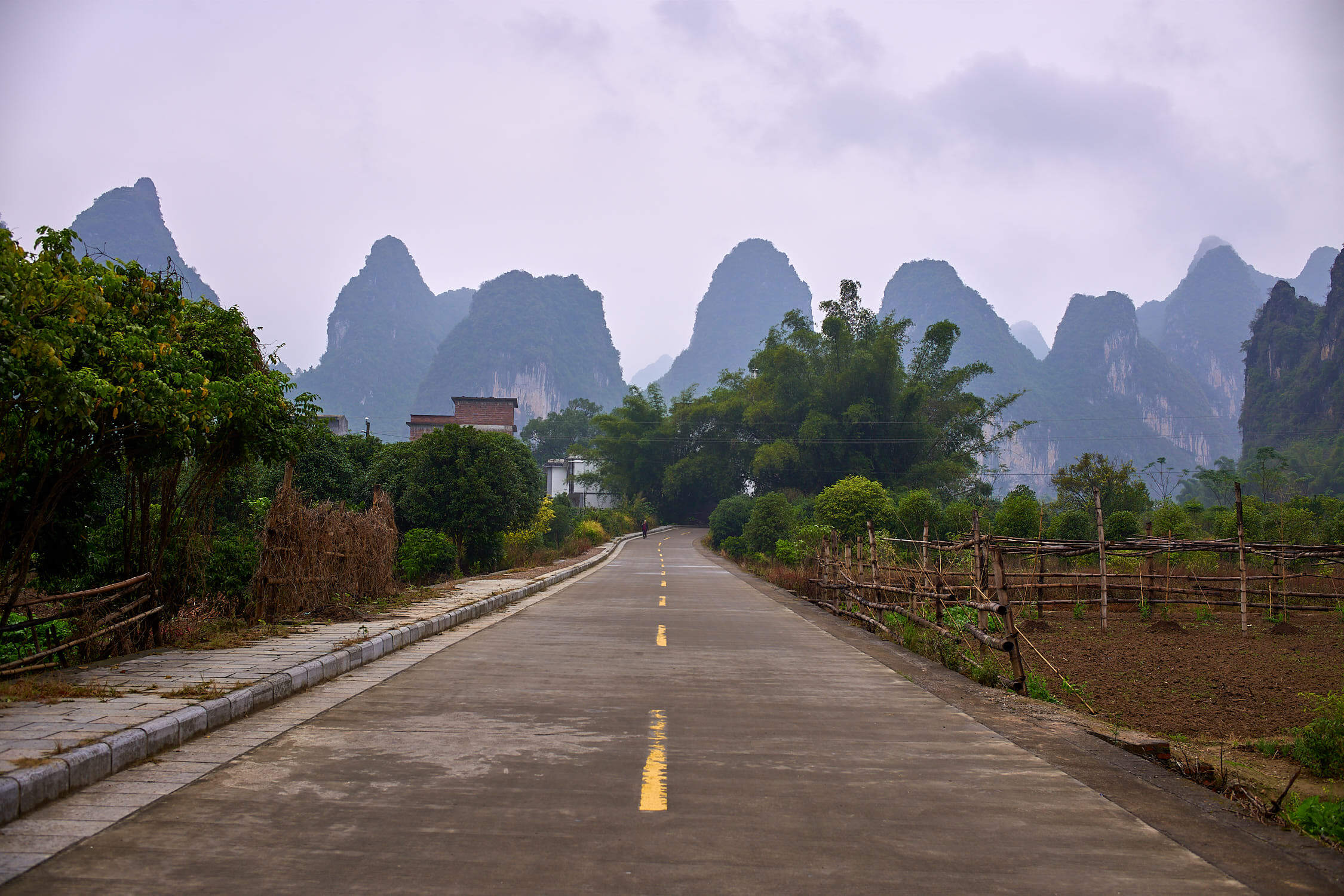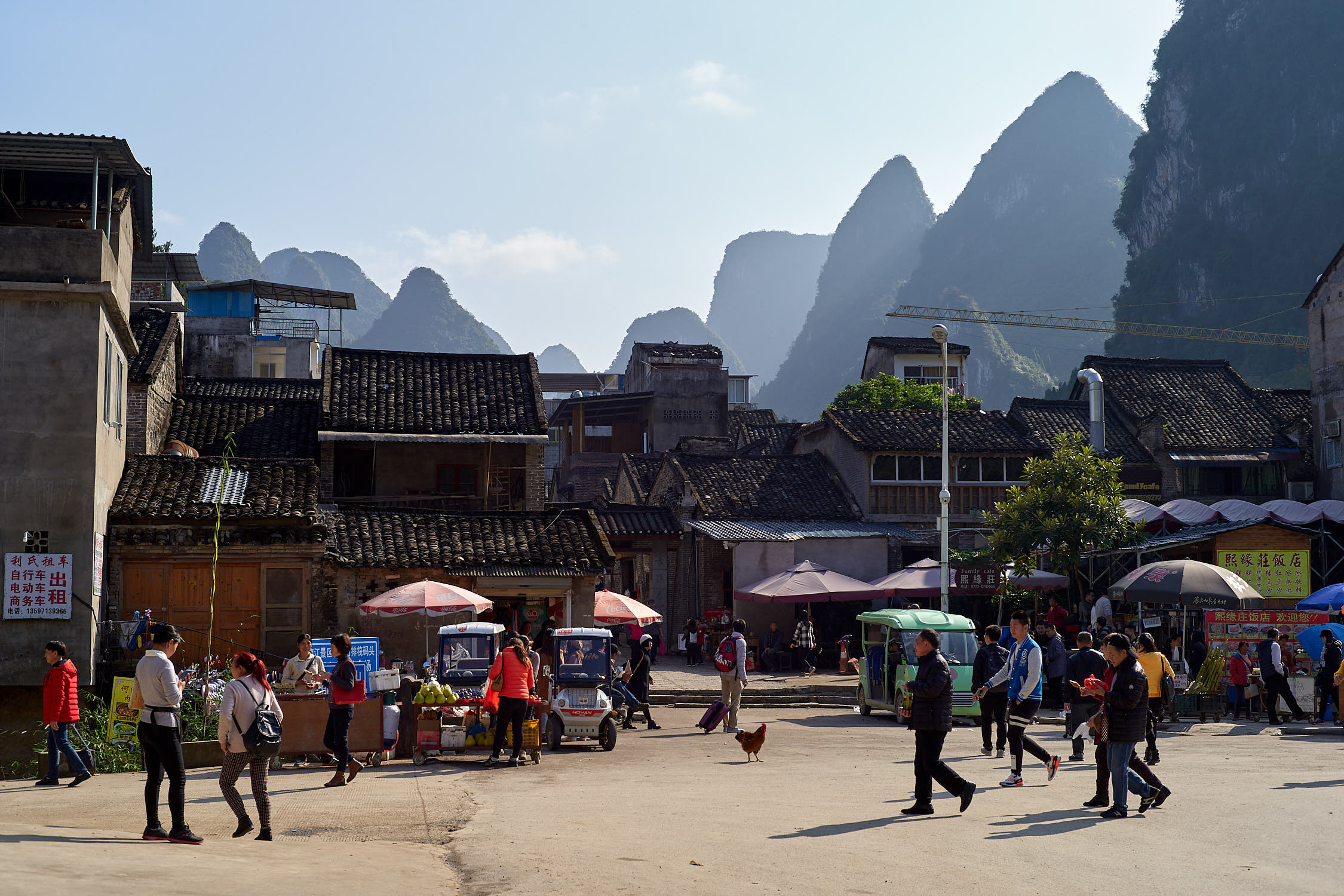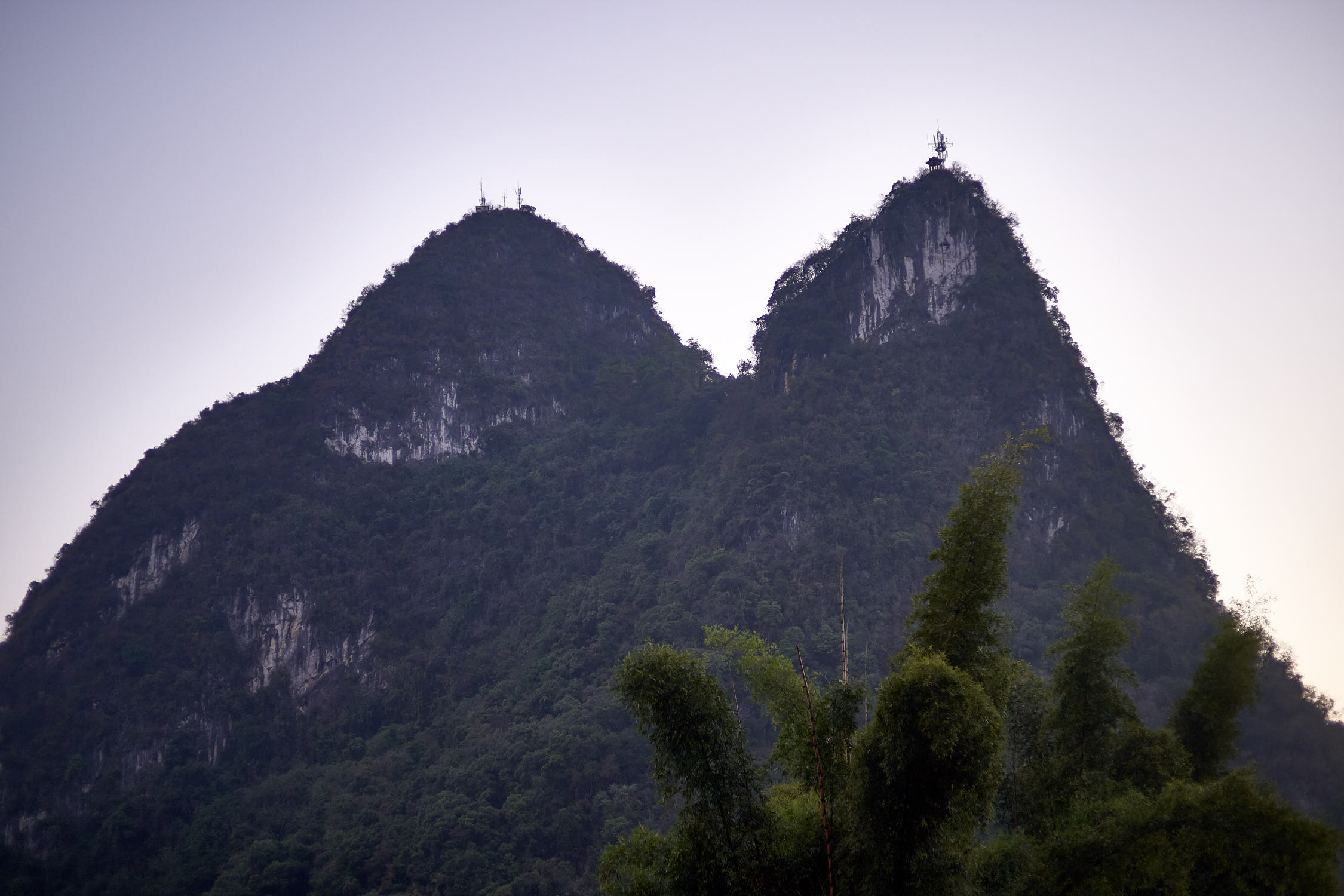The karst peaks paradise
Please note the images below and the travel commentary were recorded in November 2017.
Yangshuo is a county of Guilin City, in northeast of Guangxi. Guangxi is located in south-central China, an hour or two away from Hong Kong via plane. Yangshuo is famous for its mesmerizing views made up of the karst mountains spread throughout its terrain.
Karst is a topography formed from the dissolution of soluble rocks such as limestone, dolomite and gypsum. In Yangshuo, this is set as the backdrop with the Li River, West Street or the beautiful town of Xingping in the foreground. It makes for rather stunning scenery and has become a hot-spot for tourism in China, for both locals and foreigners.
We started off in Hong Kong and took the train to Guangzhou. From there, we switched to the China high speed rail network and took a high speed train to Yangshuo. The train ride was only around two hours and inexpensive. I highly recommend booking first class as the extra space is far more comfortable and the incremental cost very low.
Upon entering Yangshou, we used Didi (China’s version of Uber on steroids) to get a car from the train station to take us to the hotel. As we were going through the country side, we were a bit apprehensive about our hotel choice. It seemed we were going deep into the countryside with very dark side streets and no humans in sight.
When we arrived at the hotel, our apprehensions went into overdrive with this nondescript door in front of us, that was somewhat akin to a 1980’s car repair shop door. All of those apprehensions however quickly dripped away the moment the door opened and this beautiful courtyard appeared.


The XY Yunhouse is the creation of a dedicated Chinese national who worked overseas for many years and wanted to come back and give something back to her hometown. She decided to lease the land of a small village complex and, while respecting the local customs and traditions, renovate the complex in order to support the local community and provide a place to call home for its temporary guests.
The restoration of XY Yunhouse is tasteful, and as we were to find out over the coming days, very much welcome by the local village population.
The area around the hotel is true country side, replete with real local village people who’ve lived there their entire lives. In the very early morning, as we strolled around the area, local villagers came out to say “nihao!” and to welcome us to their village. With my limited Chinese, I was able to deduce that they were very happy to have this hotel in their neighbourhood and were extremely friendly to us all.

A short drive away from the hotel is a small town called Xingping; it’s a beautiful traditional town. You can find coffee shops, great food, and lots of small nicknacks that you can take back home with you.
While the town itself was a lot of fun, what we experienced next was rather unexpected, and challenging. We saw many locals heading to an entrance for a nearby mountain called Laozhai Shan (Shan means mountain in Mandarin). We thought it would be a good idea to check it out for ourselves; a quick check on Tripadvisor said that the view is well worth the hike, so we thought we’d give it a shot.
O-M-G… this had to be one of the most challenging and treacherous impromptu hikes we’ve ever done. It was steep, slippery, and in some places, nausea inducing with steep drop-offs and heights. In some places, it’s so vertical that they provide you with a ladder attached to the side of the mountain!
Like all things in life, no pain, no gain. I’ll readily admit that I was feeling dizzy at the very top because we decided to go beyond the designated viewing dock and climb to the concrete base used for power lines and telecommunications equipment. The concrete pad was crammed full with people taking in the sun setting. The hike and the nausea was well worth it for the stunning view. In the third picture below, you can see the viewpoint that we hiked up to and the steepness of the climb.

On the way out of Xingping, we stopped at the famous photography spot on the bridge coming into the town to take the iconic image of the karst formations reflecting in the water.
With the sun having set, we headed into Yangshuo town to see the famous West Street. Like most cities in China, there is always that one place that everyone goes to when they have some free time or when they want to meet with their friends, and in Yangshuo, that would be West Street.
The next morning we made our way over to the Li River to take in the scenery and were rewarded with good weather and some beautiful photography opportunities.
After a wonderful weekend in Yangshuo, we headed back to Guilin Airport (for those of us heading back to Beijing) and to the train station for those heading back to Hong Kong. While the whole weekend was excellent, we were especially impressed with the service and friendliness of the team at the XY Yunhouse. The hotel is gorgeous, the surroundings authentic and beautiful, and the staff warm and welcoming. I should also mention the many cute dogs the villagers house and take care; they’re adorable!
Discover more from fcracer - Travel & Photography
Subscribe to get the latest posts sent to your email.















I like the helpful info you provide in your articles. I will bookmark your weblog and check again here regularly.
Thank you Bernie! Glad you enjoyed it.